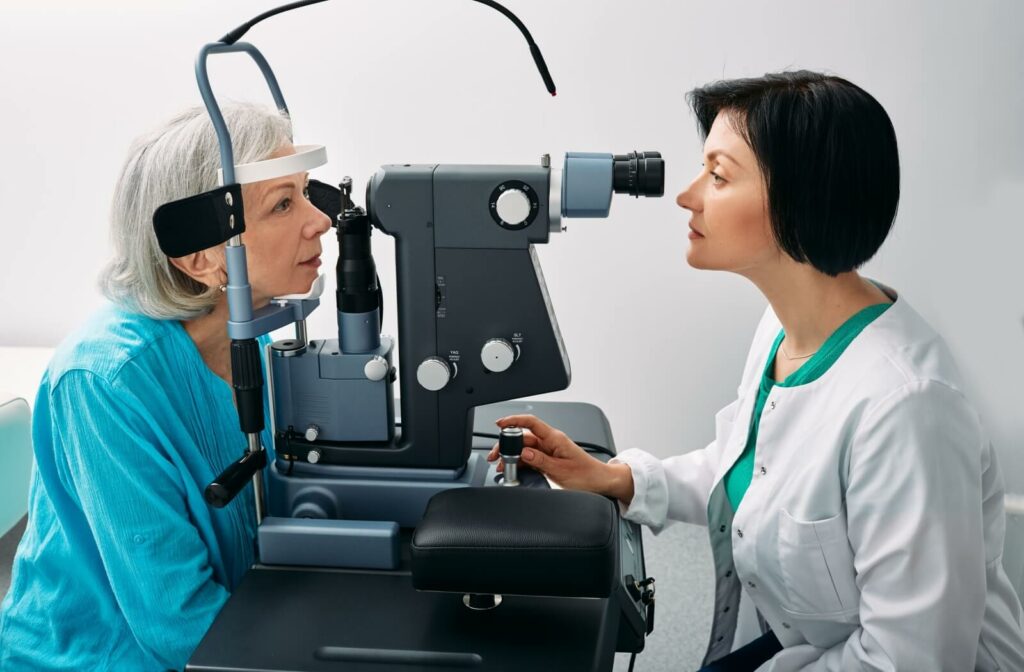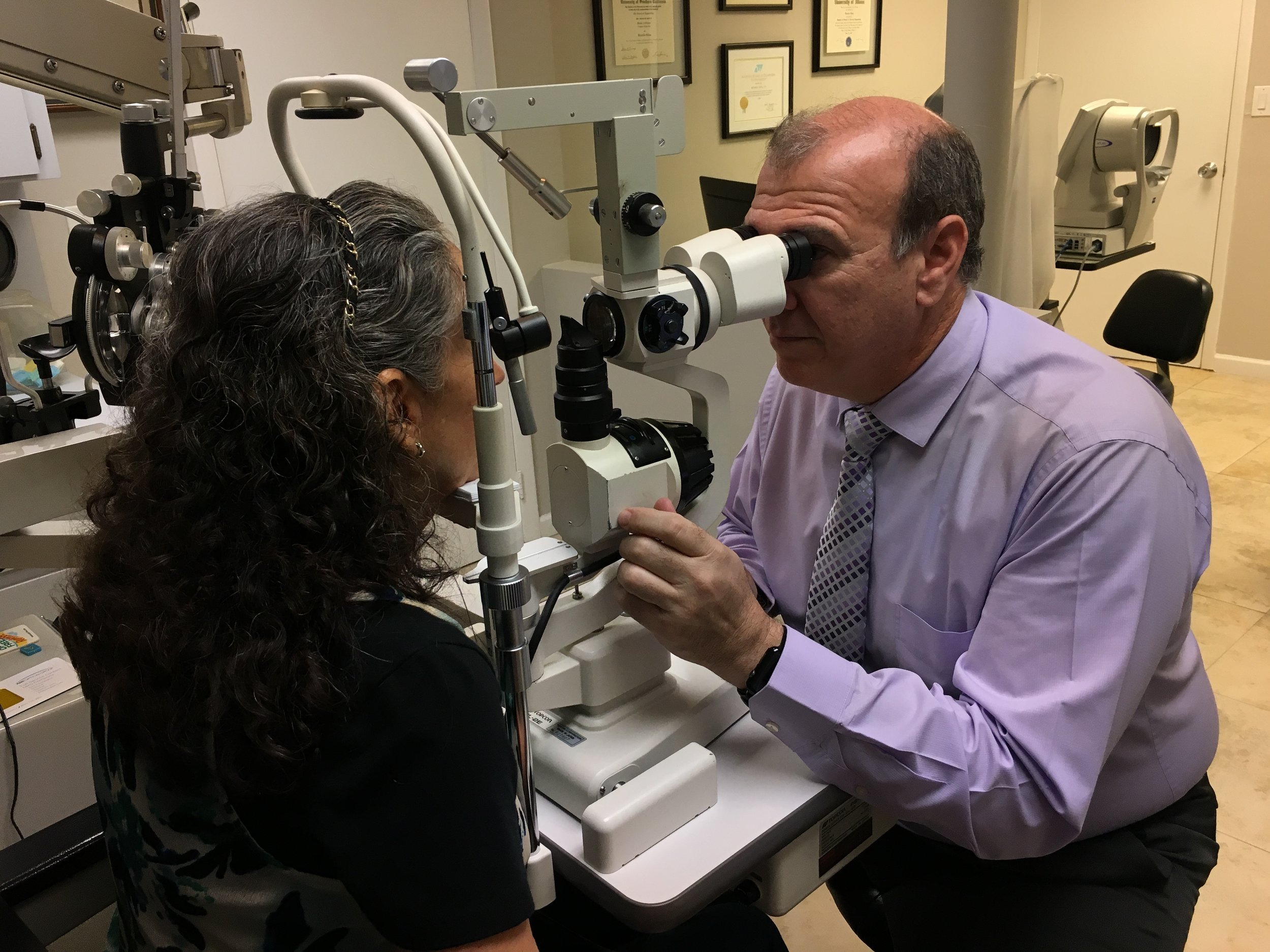Top Factors to Visit an Optometrist Chino for Your Eye Health
Top Factors to Visit an Optometrist Chino for Your Eye Health
Blog Article
Checking Out the most up to date Technical Improvements in Optometry and What They Mean for Optometrists
From the accuracy of Optical Coherence Tomography to the nuanced insights offered by AI-driven diagnostic devices, these innovations are setting brand-new criteria in individual evaluation and treatment. As these developments penetrate the technique, eye doctors are faced with the challenge of embracing these devices to boost individual outcomes.
Advancements in Diagnostic Devices
Progressing the area of optometry, technologies in analysis tools have changed the way eye care experts analyze and diagnose ocular problems and visual impairments. The previous years has observed substantial technical innovations, enabling more extensive and precise assessments. Optical Coherence Tomography (OCT), as an example, gives high-resolution cross-sectional photos of the retina, allowing for the very early detection of conditions such as glaucoma and age-related macular degeneration. This non-invasive imaging strategy has come to be indispensable in modern optometric method.
Another trick development is the introduction of innovative corneal topography systems, which map the surface curvature of the cornea with precision. These devices are particularly beneficial for fitting get in touch with lenses and detecting corneal problems. Moreover, electronic retinal imaging has actually changed traditional ophthalmoscopy, offering detailed, scenic sights of the retina that facilitate comprehensive aesthetic evaluations.
The development of wavefront aberrometry has likewise been essential, making it possible for the analysis of refractive mistakes with unmatched accuracy (Eye Doctor). This modern technology aids in tailoring corrective lenses and boosting surgical outcomes for refractive surgeries. Collectively, these diagnostic improvements encourage optometrists to deliver remarkable person care, guaranteeing early intervention and customized therapy approaches, inevitably improving visual health and wellness end results
AI in Patient Management
Building on the structure of cutting-edge analysis devices, the unification of fabricated knowledge (AI) in patient monitoring represents a transformative jump for optometry. AI systems are increasingly used to improve efficiency, precision, and personalization in patient treatment. By examining vast quantities of data, AI can recognize patterns and predict possible eye conditions, making it possible for eye doctors to tailor treatments better. This capability is important in taking care of chronic eye illness such as glaucoma and diabetic person retinopathy, where early detection and continuous surveillance are essential.
Moreover, AI-driven systems help with streamlined client communications and administrative processes. Automated organizing, online appointments, and individualized follow-up strategies not just improve person complete satisfaction however likewise maximize time management for professionals. These systems can triage individuals based on the seriousness of their problems, making certain that those in critical demand get timely focus.
In addition, AI improves decision-making by providing optometrists with evidence-based suggestions and therapy pathways. By integrating data from electronic wellness records, AI tools offer insights that inform clinical decisions, minimizing the threat of mistakes and boosting individual end results. As AI continues to evolve, its duty in individual management will likely expand, improving the landscape of optometric care.
Advancements in Retinal Imaging
In the realm of optometry, retinal imaging has observed amazing technological improvements that are enhancing diagnostic capacities and person treatment. Developments such as Optical Coherence Tomography (OCT) and fundus photography have actually changed how optometrists imagine and evaluate the retina. OCT, specifically, gives high-resolution, cross-sectional pictures of the retina, permitting the in-depth evaluation of its layers. This ability is indispensable for early detection and monitoring of conditions like glaucoma, diabetic person retinopathy, and age-related macular degeneration.
Improved imaging modalities like OCT angiography are further refining analysis precision. Opticore Optometry. Such advancements promote the recognition of minute retinal adjustments that can symbolize illness progression.
Additionally, developments in man-made knowledge are augmenting retinal imaging by allowing automated evaluation of big datasets. These systems aid optometrists in recognizing patterns a sign of pathology, thus boosting analysis accuracy and performance. Collectively, these innovations are transforming retinal imaging right into a foundation of contemporary eye care, enhancing outcomes and broadening healing possibilities.
Teleoptometry's Expanding Duty
Teleoptometry is increasingly ending up being an important part of eye treatment, driven by improvements in data and analysis devices. As optometry accepts electronic improvement, teleoptometry promotes remote assessments, allowing eye doctors to prolong their solutions beyond standard boundaries. This is especially useful in country and underserved areas where accessibility to specialized eye care is frequently minimal. By leveraging high-resolution video conferencing and progressed retinal imaging, eye doctors can conduct detailed eye examinations from afar, making sure timely medical diagnosis and therapy.
The integration of expert system (AI) additional boosts teleoptometry, my website making it possible for the evaluation of aesthetic data and helping in the detection of eye conditions such as glaucoma and diabetic person retinopathy. AI-powered algorithms can swiftly interpret complex imaging data, providing optometrists with beneficial understandings that bolster scientific decision-making.
Moreover, teleoptometry supports continuity of treatment through seamless integration with digital health documents (EHRs), enabling optometrists to preserve comprehensive client backgrounds. When consulting with different experts., this makes certain that individuals get consistent and tailored care also.
Regardless of these advantages, obstacles continue to be, including guaranteeing data protection and handling individual assumptions. Nonetheless, teleoptometry stands for a substantial stride towards even more obtainable, reliable, and patient-centered eye treatment. As innovation evolves, its function is poised to broaden additionally.

Future Patterns in Eye Care
A myriad of cutting-edge fads is set to reshape the future of eye care, driven by technical improvements and the developing needs of individuals. One considerable pattern is the integration of fabricated knowledge (AI) in diagnostics, which guarantees to improve the precision and performance of eye examinations. AI algorithms can examine substantial amounts of data from retinal pictures, potentially spotting conditions like diabetic person retinopathy and glaucoma earlier than conventional approaches.
In addition, personalized medication is gaining grip in optometry, with genetic screening educating tailored therapy plans. This technique intends to maximize client results by customizing treatments to individual genetic accounts. Wearable innovation, such as wise call lenses, is additionally imminent, here are the findings providing real-time surveillance of intraocular pressure or sugar levels, thus offering constant understandings right into systemic and eye health and wellness.
The adoption of augmented fact (AR) and online reality (VIRTUAL REALITY) in training and patient education is an additional arising trend. go to this web-site These innovations offer immersive experiences that can enhance understanding and skills both for optometrists and individuals. As these fads progress, eye doctors need to stay abreast of technological improvements to supply innovative care, guaranteeing improved patient results and fulfillment in the dynamic landscape of eye care.
Verdict

Jointly, these diagnostic innovations encourage optometrists to supply remarkable person care, making certain very early treatment and tailored treatment strategies, eventually enhancing aesthetic wellness end results.

As these innovations proceed to progress, eye doctors must adapt and incorporate them into practice, inevitably optimizing workflow efficiency and elevating the criterion of eye treatment delivered to patients.
Report this page